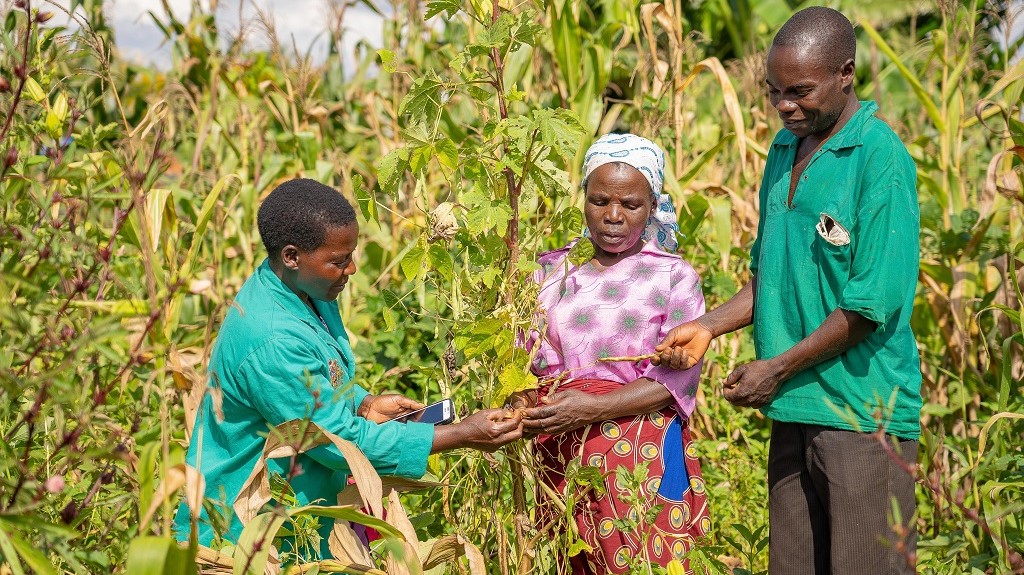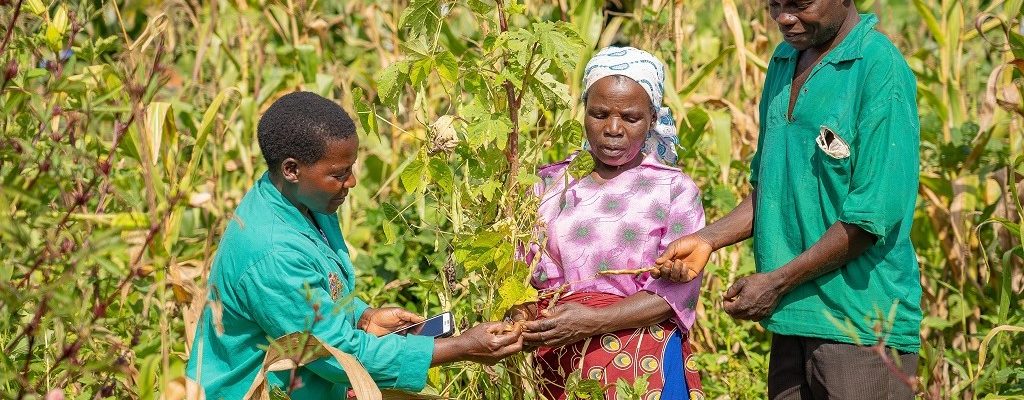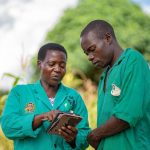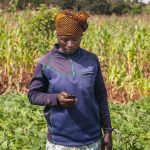By Harrison Rware, Fredrick Mbugua, and Frances Williams

An estimated 40% of the world’s crops are lost to pests impacting on smallholder farmers’ ability to feed their families, on international trade and food supply chains and hampering the pursuit of Sustainable Development Goals 1 and 2. Pest outbreaks are devastating, respect no political boundaries and are becoming increasingly unpredictable due to climate change.
Innovation is essential in providing new solutions and this project brings together novel Earth observation technology, satellite positioning, plant health modelling and on-the-ground real-time observations to deliver a science-based Pest Risk Information SErvice (PRISE) for sub-Saharan Africa.
PRISE is an early warning system for predicting the risk of pest outbreaks using cutting-edge space infrastructure, earth observation data and state-of- the-art modelling techniques. The PRISE pest alerts are transmitted to farmers through Plantwise plant doctors who operate established networks of plant clinics where farmers seek advice on crop pests and diseases.
In Zambia and Kenya, the release of pest alerts to farmers through plant doctors started in October 2017; at the beginning of the rainy season involving 521 plant doctors. Plant doctors were the first recipients of the alerts and were expected to pass the information to farmers attending plant clinics and other famers within their jurisdiction of work. Before plant doctors started receiving pest alerts, they were trained to understand their role in PRISE, mainly receiving and sharing the pest alerts with the farmers throughout the cropping season.
Follow-on studies on pest alert releases were conducted in 2018 and 2019 in Zambia and Kenya. These revealed that unlike in the past where farmers were getting advice on pests that were already in their farms, PRISE pest alerts, allow farmers to get pest information before their farms are heavily infested. This gives them room to prepare and seek advice from their advisors on control measures to take.
“Farmers traditionally have been bringing samples of already infested plants at the plant clinics to get advice on how to address the problem. However, through pest alerts, farmers are informed of a pending infestation and are therefore able to prepare,” said a plant doctor in Uasin Gishu, Kenya.
Interviews with key informants revealed that farmers who learnt about the pests earlier put in place control measures before damage occurred.
To validate the information in the alerts, plant doctors, before sharing the pest alerts with farmers, would confirm the information from in the field. Validation of the information also involves checking with farmers at the plant clinic. Plant doctors are also users of the pest alert information.
Mr Busiku of Chipapa-a block extension officer and a plant doctor from in Kafue district in Zambia reported that, “Generally, the alerts are useful to us as well and we follow the advice we get from the alerts. The farmers who follow the right management options available for the pests and use proper inputs e.g. top-dressing fertilizers, their crops are not seriously affected.”
The alerts enable government departments to respond to the anticipated outbreak. The alerts trigger district level action where a district meeting with the extension staff is convened to share the pest alert information, confirm the pest presence, and plan how to roll out control measures.
As first recipients of the pest alerts, plant doctors are expected to pass the information to farmers through plant clinics and other networks. This investigation revealed that there was information spill over to other farmers not attending plant clinics. While most of the farmers (63%) received the alerts through plant clinics, about 7% of farmers in areas not covered by plant clinics also received the information from friends who attended plant clinics.
“Although I do not attend plant clinics, I was informed to check for certain pests by my neighbour who attends plant clinics,” said Martin Murimi, a farmer in Embu County.
The service providers also share information amongst each other, with 29% of farmers receiving pest alerts from government extension officers who are not plant doctors.
The survey also revealed that upon receiving the pest alerts, the majority (84%) of farmers usually go to their farms to check for the presence of the pests while others check with fellow farmers at plant clinics (44% of the cases). A substantial proportion (35%) share the alert with fellow farmers through mobile phones, and word of mouth. The consultation with fellow farmers and neighbours’ forms part of information validation by farmers of the alert.
“Farmers usually check with their neighbours and fellow farmers at the plant clinics to be sure that the pest is not only in their farms and share response approaches,” said a National Data Manager, Zambia.
Timely access to pest information by advisors and farmers, enables control and preventive measures which are key ingredients to reducing crop losses and increasing crop productivity at the farmer level. Broadening the recipients of the alerts to include the wider government extension platform will ensure a wider reach for the farmers and importantly, timely actions on pest management.
Read more about PRISE:









[…] This article was originally published on prise.org […]
[…] This article was originally published on blog.invasive-species.org […]